The Japanese aircraft industry produced some excellent high performance fighters towards the end of the war. The N1K was generally considered the very best among the naval types.
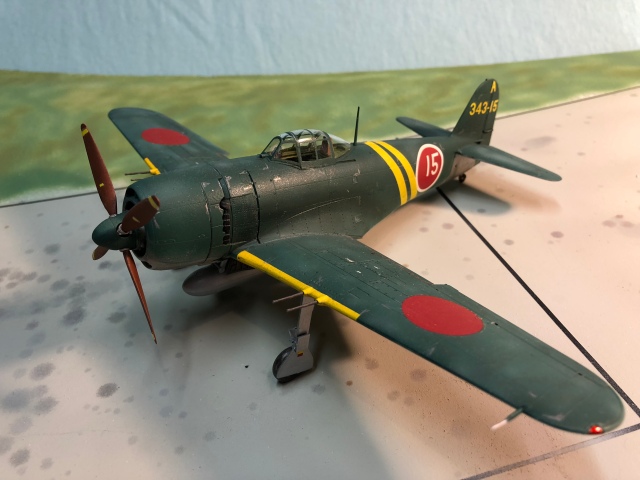
Join me for a look at fighter that Allied pilots were thankful never appeared en masse.
The N1K may have the most unusual development of any successful type in World War II. It started life as a float plane fighter, intended to replace the A6M2-N Rufe. The Rufe, or float Zero, saw some success defending remote island bases when it was used as defense against Allied patrol planes and bombers.
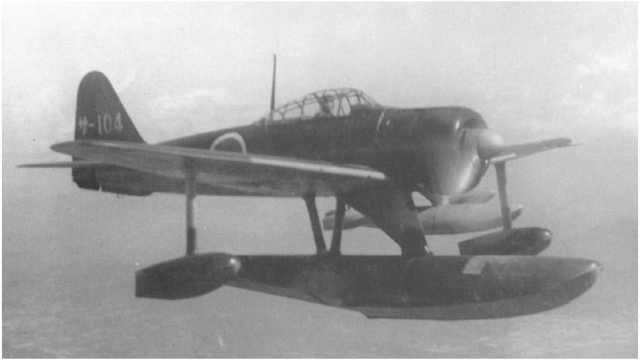
Mitsubishi A6M2-N was a float version the famous Zero. (Photo is public domain from Wikipedia)
Kawanishi immediately recognized that to make a float fighter viable they would need a massively powerful engine. They went with a new Nakajima Homare engine that generated over 1800 horsepower. This is nearly as powerful as a Pratt & Whitney Double Wasp, and easily the most powerful thing available in Japan at the time. Another notable design feature was automatic combat flaps to improve maneuverability.
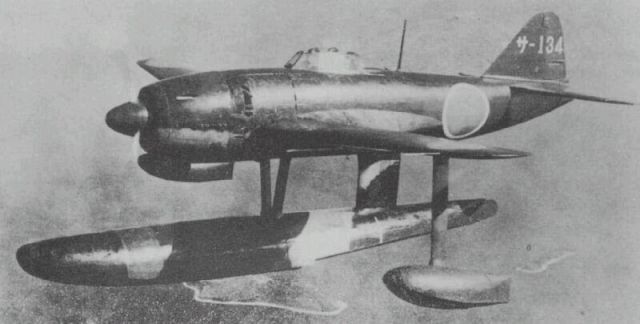
Production model N1K1 Rex. (Photo is public domain from Wikipedia)
While the result may have been the most capable float fighter ever built, the whole project started as almost a fool’s errand. Any fighter with floats attached can be bettered by a similar class fighter without. Kawanishi actually recognized this early in the process. The company initiated, with their own money, a land plane derivative of the float fighter.
This proved wise when, due to the developing war situation and a need for more land based interceptors, the Navy quickly ordered the land based type into production after less than 100 of the float version had been built. This was the N1K1-J, which readers may guess from the designation was little changed from the float plane except for wheels in place of floats. Over 1000 of this type were built and it proved very effective in the Philippines and Formosa. Effective in spite of some serious teething problems for the design. Not only was the engine immature but there were inefficiencies related to the long ducted cowling and midwing form (both advantageous for the floatplane, not needed for the land plane).
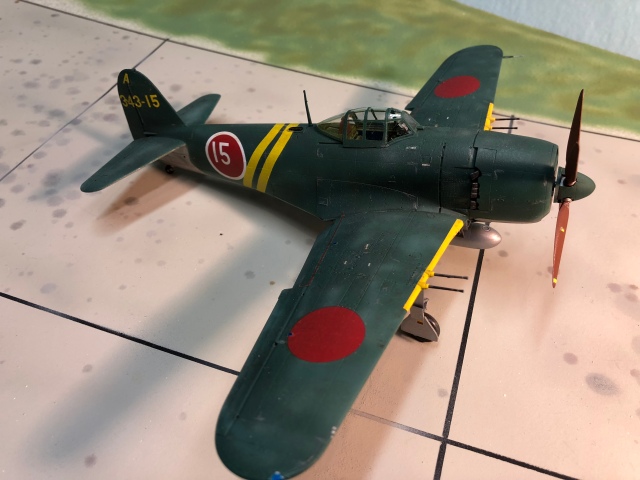
This led to a pretty thorough redesign and change of designation to N1K2-J. By this time the B-29 bombing of Japan was getting underway and Kawanishi would struggle to meet both number and quality goals, but this final version of the George was clearly the best Japanese Naval fighter of the war. It could hold its own against Hellcats, Corsairs and Mustangs as those types started appearing in Japanese skies.
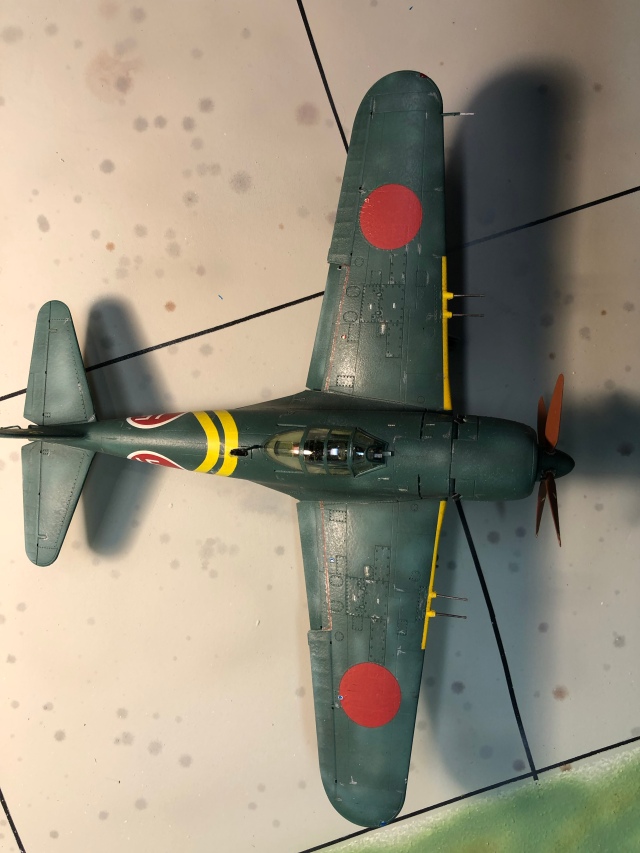
Due the deteriorated war situation the Japanese Navy formed an elite fighter group, 343 Kokutai, with the few remaining experienced fighter pilots. The group was commanded by Minoru Genda and included the famous aces Kaneyoshi Muto and Saburo Sakai. They were equipped with both land plane versions of the George and used them successfully in 1945. On one occasion, the group attacked an American carrier raid of over 300 planes and shot down eight Hellcats for a loss of six of their own.
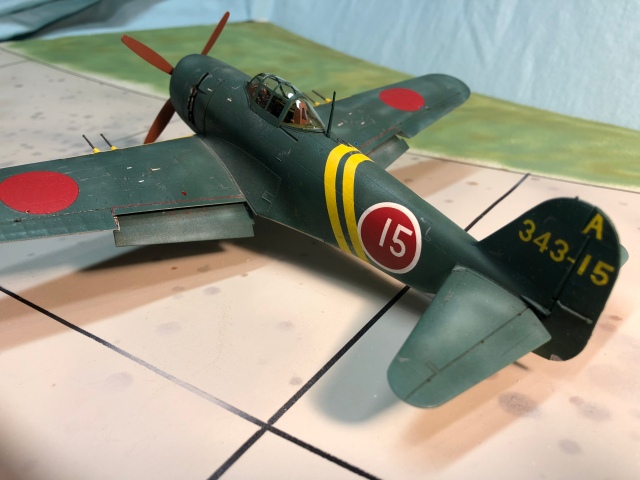
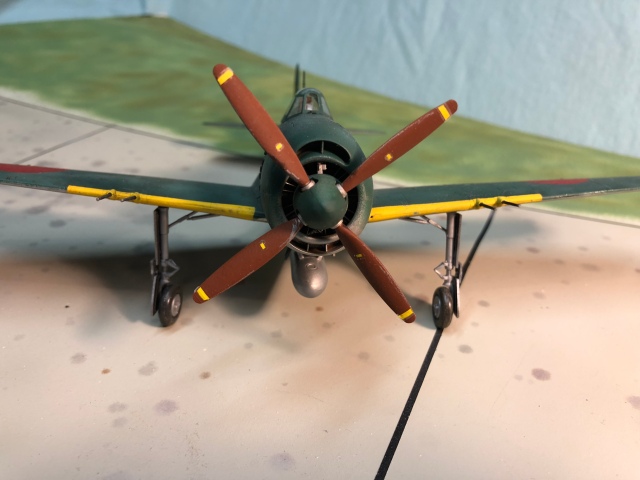
This model is from the Hasegawa kit. It represents a plane flown Squadron Leader Kanno of the 343rd Fighter Group.
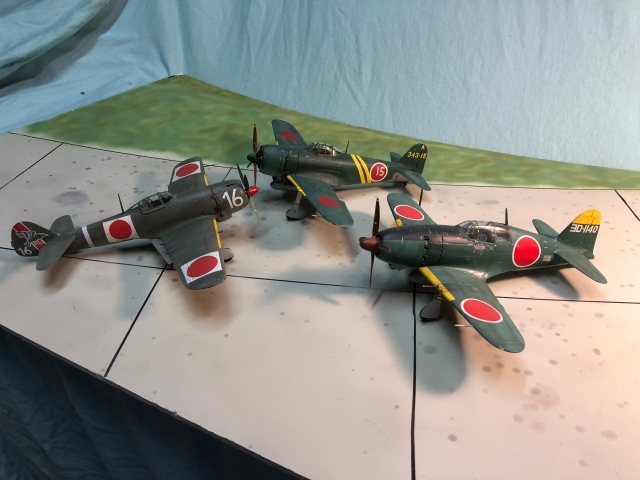
Three late war Japanese types. The Ki-84 Frank (at left) was the Army’s ultimate fighter design. The J2M Jack (at right) was a slightly earlier design for the Navy.
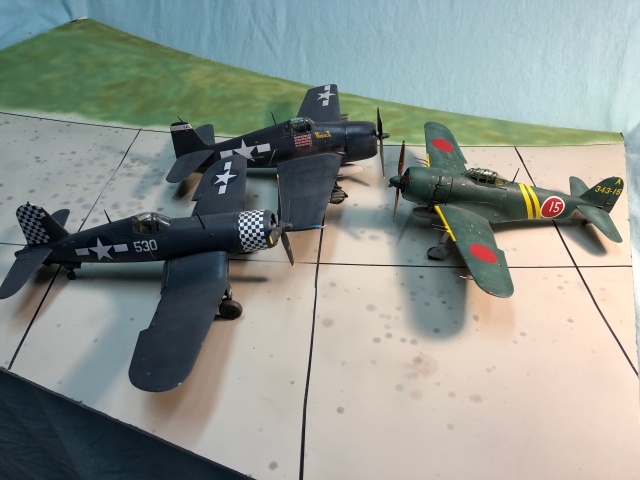
The George was slightly smaller and slightly less powerful than late war American types like Hellcat and Corsair. But that made it nearly equal in every sense.

A very nice model you have there. I hadn’t heard of this type, it certainly sounds an impressive aircraft!
It certainly counts as a minor type! Good design, but too late to matter.
I know it’s all about Japanese aircraft, but that Corsair is really lovely!
Hah!
You’re allowed to like anything you want!
I always loved the late-war Japanese types, the Ki-84, A6M6c, the J2M Raiden and the N1K2-J ‘George’. You have made a fine example here Dave.
Thanks Rich!
Yeah they were all pretty solid designs, Japan just could never build enough of them.
These Navy fighters were in the category of too little too late.
Yes, absolutely!
Reblogged this on My Forgotten Hobby II and commented:
Can’t get enough of Plane Dave’s posts!
Hey that’s awesome Pierre! I’m pleased when you like what you see.
I’m never disappointed.
You know me Dave… I like, I reblog and then I read.
Nice post.